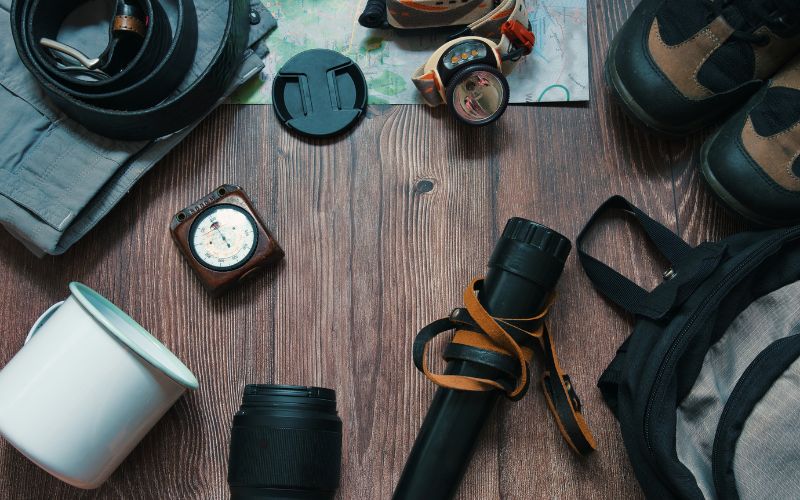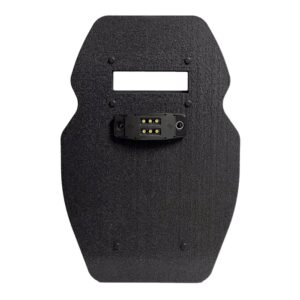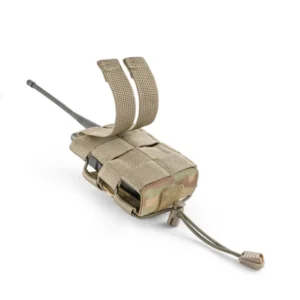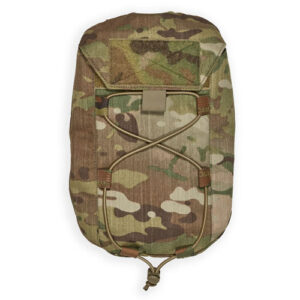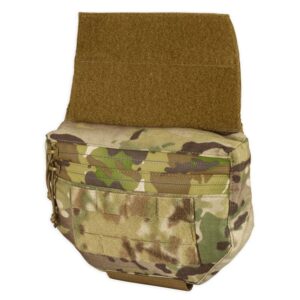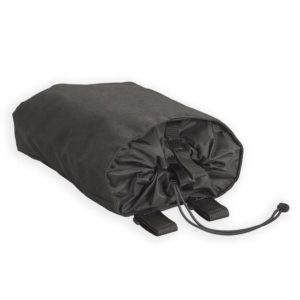Plate carriers are vital tactical gear used by military personnel, law enforcement officers, and prepared civilians in high-risk situations. Wearing plate carriers serve as a platform for ballistic protection and carry essential gear. However, a plate carrier is only as effective as its equipment. Pairing your plate carrier with the right gear can significantly enhance operational readiness, comfort, and efficiency. In this blog, we’ll explore the must-have items to accompany your plate carrier setup for optimal performance in the field.
1. Ballistic Plates: The Core Of Protection
The primary function of a plate carrier is to hold ballistic plates that provide critical protection against projectiles. Selecting the appropriate plates is essential to ensure you have the right level of defense for your specific mission or environment.
- Ceramic Plates: Lightweight and effective against rifle rounds, though they can crack upon impact and require replacement after damage.
- Steel Plates: More durable but considerably heavier, which can impact mobility.
- Polyethylene Plates: Lightweight and durable, offering resistance to high-velocity rounds while being less prone to cracking than ceramics.
Ensure your plates are rated to withstand the threats you expect to encounter, typically categorized by National Institute of Justice (NIJ) standards. Proper placement is key—front and back plates should cover vital organs like the heart and lungs.
2. Magazine Pouches: Quick Access To Ammunition
Ammo management is critical in any tactical scenario, and your plate carrier should allow for easy access to magazines. Magazine pouches come in various designs and can be attached via MOLLE (Modular Lightweight Load-carrying Equipment) webbing to your plate carrier. Here are a few considerations:
- Rifle Magazine Pouches: These are typically placed on the front for quick access and hold 3-6 magazines.
- Pistol Mag Pouches: Usually positioned on the cummerbund or sides for easy access to sidearm ammo.
Position your magazine pouches strategically, ensuring they are accessible without hindering movement.
3. IFAK (Individual First Aid Kit): A Lifesaver
An IFAK is a must-have in any plate carrier setup. In a critical situation, having medical supplies at hand can save lives. Your first aid kit should include:
- Tourniquets
- Gauze and trauma dressings
- Hemostatic agents
- Chest seals
- Scissors and tape
The IFAK’s placement is key. Many users attach it to the side or lower front of the plate carrier, where it can be easily reached with either hand. Sometimes, it’s better to have a teammate assist in achieving the IFAK, so consider this when choosing its location.
4. Communication Gear: Stay Connected
Staying in communication with your team is essential during operations. Radios and other communication devices should be securely mounted on your plate carrier for easy access.
- Radio Pouch: A MOLLE-compatible radio pouch can be positioned on the side or shoulder strap for easy access.
- Antenna Placement: Some operators prefer routing the antenna along the back or side to avoid obstruction.
- PTT (Push-to-Talk) Button: Ensure the PTT is easily accessible for quick communication.
5. Hydration System: Maintain Peak Performance
Staying hydrated is crucial for maintaining peak physical and mental performance, especially in hot or high-stress environments. Attaching a hydration system to your plate carrier allows you to carry water without the need for external canteens or stopping for a break. Most hydration systems include a bladder that fits into a MOLLE-compatible pouch attached to the back of the plate carrier. This setup lets you drink through a hose routed over your shoulder, enabling hands-free hydration while on the move.
Hydration systems are particularly useful for extended missions or operations in hot climates where dehydration can quickly become a critical issue. When setting up your hydration system, ensure the bladder is securely mounted and the hose is easily accessible. Additionally, be mindful of the extra weight the water bladder adds to your loadout. In some situations, carrying additional water bladders or purification tablets might be necessary for prolonged operations.
6. Utility Pouches: Versatile Storage Options
Utility pouches are indispensable for carrying additional tools and equipment. These pouches are often used to store items like:
- Multitools
- Flashlights
- Batteries
- Maps or GPS devices
- Snacks for long missions
Attach utility pouches to the sides or lower front of your plate carrier, ensuring they don’t interfere with more critical gear like magazines or the IFAK.
7. Admin Pouch: For Essential Tools And Documents
The admin pouch is often overlooked yet highly functional for any plate carrier setup. It’s designed to store small essentials such as notepads, pens, identification cards, and other administrative tools. This pouch becomes incredibly useful when documentation, quick notes, or map navigation are required. For many operators, the admin pouch is mounted on the upper front part of the plate carrier, which doesn’t interfere with larger pouches like magazines or utility pouches.
An admin pouch can also double as a storage space for navigational aids, such as a GPS device or compass, making it easier to access these items in time-sensitive situations. Many admin pouches come with various compartments, allowing for better organization of tools and documents. Choose an admin pouch with a closure system that ensures your items remain secure but easily accessible when needed.
8. Holster And Sidearm: Ready Access to Secondary Weapon
For those who carry a sidearm, a reliable holster system is essential. There are a few options for holster placement on a plate carrier:
- Drop-Leg Holster: Popular for keeping the sidearm accessible without cluttering your upper body.
- Chest Rig Holster: A chest rig holster is directly attached to the carrier for quick access. Pilots and seated professionals commonly use it.
Ensure that your holster allows easy drawing and is compatible with your primary weapon system.
9. Dump Pouch: Efficient Magazine Management
A dump pouch is essential for quickly storing empty magazines during firefights or training exercises. Typically mounted on the back or side of the plate carrier, dump pouches allow you to stow used magazines without fumbling or dropping them quickly. This pouch helps keep magazines organized for later reloading while preventing unnecessary clutter or lost equipment during missions.
Placing a dump pouch should be out of the way of more critical gear yet still accessible when needed. Some operators prefer attaching it to their waist or lower back to avoid obstructing the front of the plate carrier. Proper use of a dump pouch can enhance reload efficiency and reduce the time spent managing magazines in the heat of action.
10. Additional Armor: Side Plates For Extra Protection
Side plates can be added to your setup for those seeking enhanced protection. These plates fit into pouches on the sides of your plate carrier’s cummerbund, offering extra defense against threats from lateral angles. While they add weight, side plates are invaluable in high-risk scenarios where lateral protection is critical.
Final Thoughts: Balance And Comfort
While setting up your plate carrier, balancing weight distribution for comfort and mobility is essential. Heavier items like plates and loaded magazines should be positioned to avoid overburdening one area, while lighter gear like admin tools can be placed where they won’t obstruct movement.
Regularly train with your plate carrier to ensure you’re comfortable with your setup. Adjust and reconfigure as needed to optimize performance during tactical situations. Every mission may require a slightly different loadout, so flexibility and familiarity with your gear are key.
Frequently Asked Questions
What Is The Most Important Gear To Pair With A Plate Carrier?
The most essential gear to pair with a plate carrier includes ballistic plates for protection, magazine pouches for easy access to ammunition, an IFAK (Individual First Aid Kit) for emergency medical supplies, and communication gear like a radio. These items ensure you’re prepared for critical situations with the right combination of protection, functionality, and accessibility.
How Should I Organize My Plate Carrier Setup?
When organizing your plate carrier, prioritize balance, accessibility, and comfort. Keep magazines and essential gear like an IFAK within easy reach, typically at the front or side. Hydration systems are usually placed at the back, and utility pouches should be positioned where they won’t interfere with quick access to your primary equipment. Regular training with your setup will help you find the optimal arrangement.

